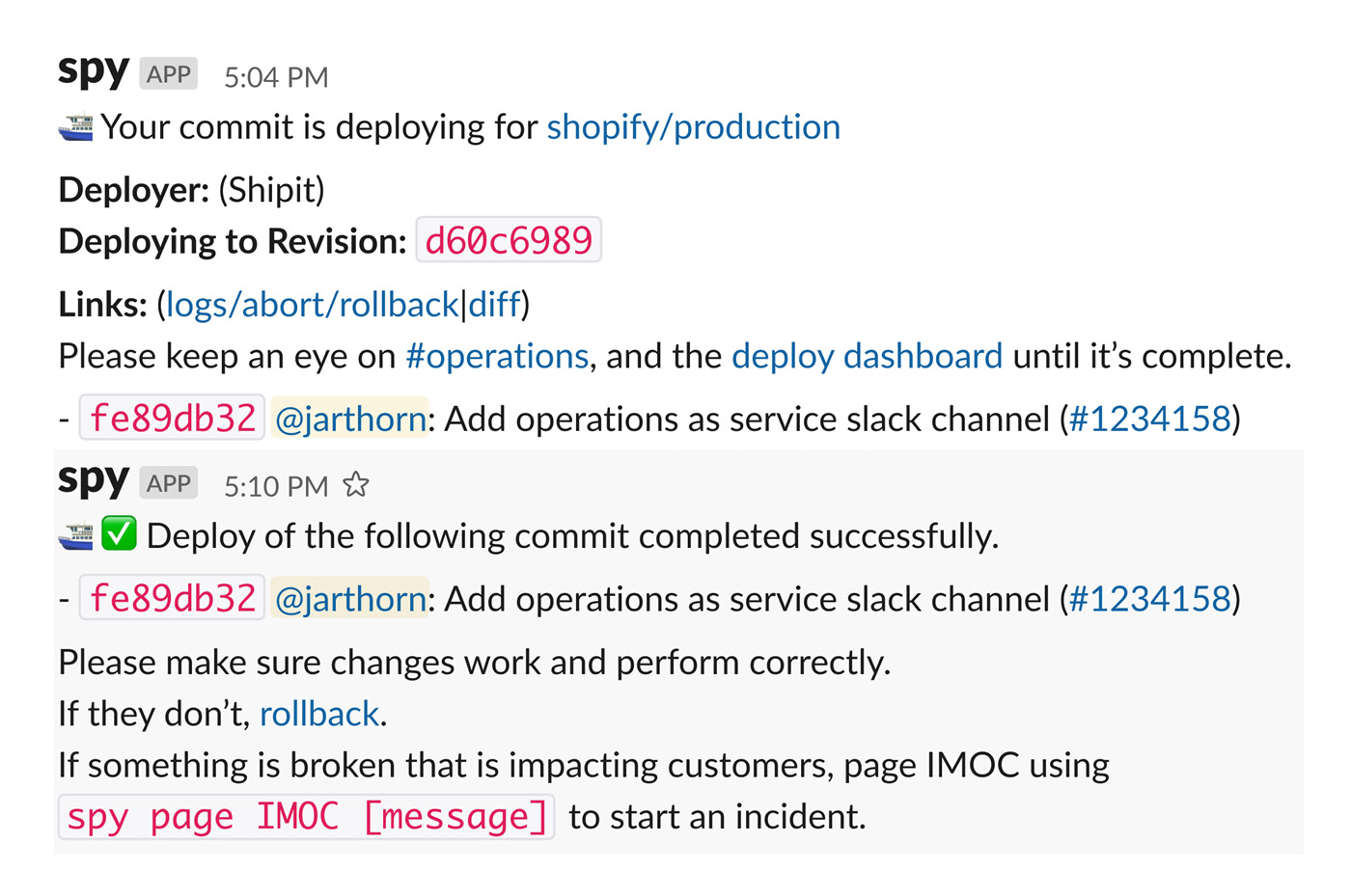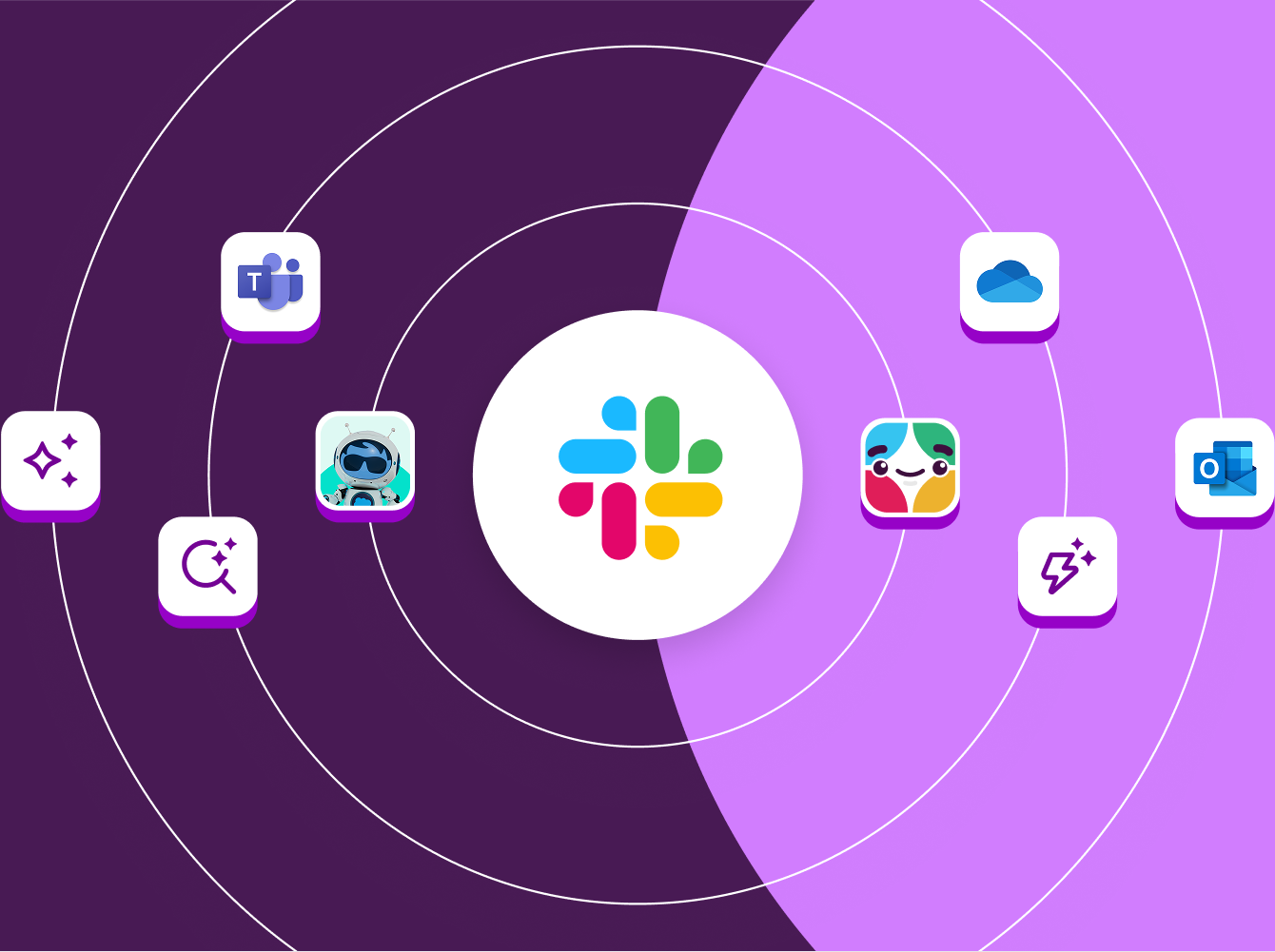The average company loses more than 20% of its productive power to organizational drag.

That includes all the time teams spend digging up requirements, or coordinating on the status of designs, updates, and everything else needed to bring a product to market and keep improving on it in the long run.
This handbook will show you and your team how you can use Slack to keep the development cycle agile and efficient. Work in channels, integrate apps and services you already use, and deploy various Slack features so that everyone can come together quickly, stay on the same page, and spend more time focused on what matters: shipping code and improving service reliability.
Use this handbook to learn how to:
- Get access to key information, experts, and specialists company-wide
- Review and deploy code from one place
- Track real-time performance data from multiple systems to resolve issues faster
- Streamline and automate workflows by connecting to services and platforms you regularly use
“Development teams using Slack deliver 5% more output overall, with 23% faster time to market, 27% less time needed to test and iterate, and faster identification and resolution of engineering-related bugs.”
Access the information and specialists your team needs to ship high-quality code

More than just a place to organize conversations, public channels automatically create an archive of knowledge that’s searchable by everyone in your organization. If you commit to doing most of your work in public channels, when someone needs more information to move forward—like the details of the last release—that information is readily accessible.
It’s best to reserve private channels for conversations that are sensitive or confidential and direct messages for quick back-and-forths.
“We have what we like to call an ‘end-to-end delivery pipeline’ that starts with source code and goes all the way through to production deployment. And now we have Slack integrated into all the key milestones in that process.”
Turn alerts into action
Manage code reviews, resolve outages, and more in Slack
When you need to hash out a set of changes to a pull request or huddle around an urgent alert, Slack apps and integrations can pull notifications from a variety of systems into channels where related discussions are already happening. This way, everyone can identify potential issues and work through solutions together.
Not only does piping system alerts into public channels make it easier for managers and people from other teams to stay updated on progress, but resolving issues as a team in channels creates an automatic, time-stamped audit trail that can be useful in incident reviews. And less juggling between multiple apps and logins means fewer lags in your workday.
Integrating development tools with Slack
Connect these apps and services to your Slack workspace to manage all your build and deploy processes in one place.

Post commits, pull requests, and comments on GitHub Issues to a channel in Slack and automatically notify team members when requests have been submitted.
Receive notifications on JIRA issue status in Slack, assign work, and follow the team’s progress.
Post deployment notification to a Slack channel and organize the team around incidents.
Reduce incident resolution times by aggregating Pagerduty events and getting actionable alerts posted to a Slack channel.

Pull web, transaction, server, and mobile alerts from New Relic into a Slack channel.
Get notified in a Slack channel when code is committed to a repository.
Discover more in the Developer Tools category of the Slack app directory.
Keep teams aligned and processes agile
Working together in Slack
Now that you’ve seen how channels, apps and integrations connect you with the people and tools important to your team, let’s take a look at how you can bring more of your daily operations into Slack. When teammates work together in channels, they can support each other in delivering their highest-quality work and spotting potential issues before they arise.

Create and share code using snippets
Share code, configuration files and log files with snippets, which work with a variety of programming languages. Team members can download them, view the raw file, and leave comments.
Spare yourselves a meeting: Host standups in Slack
Find out who’s working on what, the status of a project, and any blockers by moving standup meetings into team channels in Slack, where they can be searched for later on. Or why not let an app facilitate? Teamline and Standuply are both popular options.
Track issues and spot patterns with a triage channel (and emoji)
To maintain quality and stop worrisome trends in their tracks, create dedicated triage channels (like #triage-iosapp) where people from across the organization can report bugs, issues and irregularities. We recommend assigning a team member as triage captain for the day to help field questions and route top-priority issues to the right teams.
Sending signals with emoji
Emoji add a lot of helpful context to messages in Slack. In the case of triage channels, they can also serve as a diagnostic tool, helping you track trends and see patterns in behavior over time.
Build with your team, for your team
Creating internal integrations
 While there are many apps available to connect to your workspace, there may be cases where you need to tailor a workflow to your team’s needs. And that might mean bringing even more of your tools and data into Slack. Internal integrations help you do just that.
While there are many apps available to connect to your workspace, there may be cases where you need to tailor a workflow to your team’s needs. And that might mean bringing even more of your tools and data into Slack. Internal integrations help you do just that.
Use internal integrations to combine data from multiple resources into one message, so you can manage DevOps, deployments, CI and incidents, and even approve wireframes, without ever leaving Slack. Here are some other handy applications.
Use Case: Shopify’s super Slack apps
The e-commerce platform Shopify operates more than 500,000 online shops. To keep the virtual doors of all these businesses open, the company has created more than 180 internal integrations for Slack. The most popular, Spy, allows Shopify to run hundreds of custom commands, like query information about the most active shops, traffic volume and checkouts; inspect and operate servers across data centers; and create new GitHub repositories, without ever leaving Slack.

Ready to explore integrations?
Start building at API.slack.com and be sure to check out the app blueprints for detailed instructions, code samples, and helpful flow diagrams.
What’s next?
There’s plenty to digest in this handbook, so here are a few things your team can do for starters to streamline your workflows, speed up your processes, and make information more accessible across teams.
Checklist:
- Do a little channel clean-up: Maintaining good channel hygiene is essential for keeping communication between teams and departments crystal clear. Make sure to periodically audit your channel list, archiving ones that are no longer relevant or useful. Check out these tips for reducing noise in Slack.
- Rethink your channel names: Is there a consistent naming convention across all your channels? Are they labeled in a way that makes their purpose obvious? Take some time to rename channels so that they’re easy to find and follow. Learn more about channel naming best practices.
- Give some apps a whirl: Connect a few key services that you use often (like your go-to bug-tracking tool) to your team’s workspace and try sharing and updating data directly in Slack. Explore development tools for Slack.
For detailed tips and how-tos on organizing channels, working with apps, and more, visit our Help Center. Or if you prefer to talk to a human, reach out anytime at feedback@slack.com or find us on Twitter @slackhq, and we’d be happy to help.










